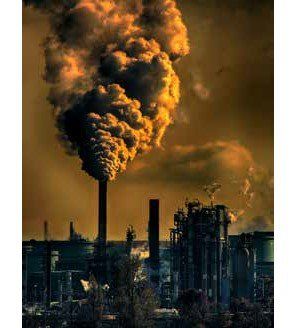WHO SHOULD DETOX?
. Currently, the methods used to test chemicals for safety are based on an outdated model of toxicity that says that the dose makes the poison. This ignores several important factors:
• Many types of pollutants don’t degrade readily over time, but instead build up in our environment and our bodies.
• Some types of chemicals, especially those with endocrine disrupting properties, can have negative health consequences in very small amounts.
• We are never just exposed to one chemical at a time and the cumulative effects are worse than those of any one compound in a vacuum.
• Today I want to focus in on a few conditions that would particularly benefit from cleansing. These are by no means the only health concerns in which environmental toxicity plays an outsized role:
1) Asthma
You’ve probably heard that air pollution from industry can cause and worsen asthma. Here are some other sources of chemicals that contribute to the development of asthma that you might not have heard of:
• Perfluorinated chemicals found in nonstick cookware, stain and water-resistant treated fabrics, dental floss, waterproof outdoor gear, firefighting foam and contaminated drinking water.
• Phthalates found in scented candles and air fresheners, scented laundry detergent, household cleaners, personal care products, nail polish, food packaging, vinyl flooring, window blinds and house dust.
2) Sex hormone disruption and related conditions (Including infertility, low libido, endometriosis and early onset puberty)
• There are tens of thousands of chemicals in use in the U.S. that exhibit hormonal effects in the body. A few of the categories of chemicals that disrupt hormones include BPA and replacement chemicals found in plastics, phthalates and perfluorinated chemicals (see above) as well as:
• Organophosphate pesticides found in conventionally grown produce, home and garden treatments, lice treatments, contaminated drinking water, farmed seafood, veterinary products (flea and tick treatments) and house dust.
• Flame retardants found in upholstered furniture, electronics, textiles, car seats, house dust and airplanes.
• Lead
• PCBs found in high fat foods, contaminated water, contaminated seafood and house dust.
• Arsenic found in contaminated drinking water, rice, chicken, playground and decking materials, cigarettes and contaminated soil.
• VOCs found in scented products like perfumes, candles and air fresheners, cleaners, paints, cosmetics, art supplies and more.
3) Weight gain, Obesity and Diabetes
Many chemicals fall into a category called ‘obesogens’, meaning that they promote weight gain and make it more difficult to lose weight. A few of the groups of chemicals that fall into this category include BPA and related compounds, phthalates, organophosphate pesticides, flame retardants and perfluorinated chemicals.
Is this all starting to sound repetitive? So many of these chemicals have a wide variety different negative impacts on our health. Please join me online this month to learn the basics of cleansing and detoxification and how to reduce your exposure to toxins.
Dr. Jennea Wood is a naturopathic physician practicing with Tummy Temple in Greater Olympia/ Lacey. Her goal with every patient is to identify and address root causes of disease. To learn more, please visit https://www.tummytemple.com/jenneawood- nd.











